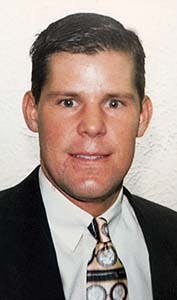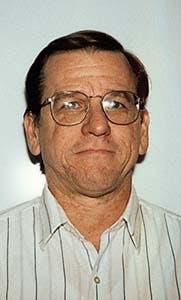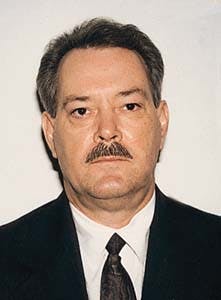BHA reconfiguration reduces costs in Austin Chalk
Blaik M. Wisenbaker, Terry L. MoserRedesigning the bottom-hole assembly (BHA) has reduced horizontal drilling costs in the Austin Chalk.
Sonat Exploration
Tyler, Tex.Michael L. Edwards
Nalco/Exxon Energy Chemical
HoustonWayne H. Eggleston
Halliburton Energy Services
Houston
More than 30 runs have been made with a new design in which an adjustable stabilizer is placed ahead of a straight, positive-displacement motor (PDM) instead of behind.
Cost reductions have occurred through reductions in tool failures, slide lubricants, and the number of wells needed to drain the reservoir. In environments where mud weights have been greater than 14 ppg, savings have exceeded $200,000/
well.
Additional benefits offered by the new BHA configuration include increased penetration rates, reduction of trips, extension of horizontal sections, reduction of mud additives, and increased life for the measurement-while-drilling (MWD) assembly and motor while drilling in deep, high-temperature wells. These findings are unique in that these are the first known cases where an adjustable stabilizer has been successfully run below a motor.
The Austin Chalk is a naturally fractured carbonate reservoir that is productive across a region of 650 miles, extending from South Texas to East Louisiana (Fig. 1 75,354 bytes]). In addition to fracture systems, the Austin Chalk has extensive faulting and formation dip changes. These faults, fractures, and dip changes can significantly affect the build and drop tendencies of the BHA.
To keep the BHA in the target zone, mechanical course corrections are usually required. The target zone in the Austin Chalk is typically a 15-30 ft window, believed to contain the highest degree of fracturing (Fig. 2 [63,054 bytes]).
Previous BHA configurations
A bent housing PDM has been used as the conventional means for controlling inclination in the Austin Chalk. The motors have been used both without an adjustable stabilizer and with an adjustable stabilizer placed behind the motor.The BHA configuration shown in Fig. 3 [43,102 bytes] is typical of those used in the Austin Chalk. A polycrystalline diamond compact (PDC) bit is used, and the assembly incorporates a dual-power section with two points of stabilization. The medium-speed motor utilizes a fluid-cooled bearing assembly and provides about 240 rpm with a throughput of 250 gpm.
With a typical bend setting of 1.83°, the assembly is capable of producing build-up rates (BURs) of 5-7°/100 ft in the horizontal section. To build angle with this steerable BHA, the tool face is oriented toward the high side of the hole.
Weight is applied to the bit without drillstring rotation. The drillstring slides along the low side of the hole, allowing the BHA to build angle. To drop angle, the same procedure is followed, except that the tool face is oriented toward the low side of the hole.
Sliding a steerable BHA to control well bore inclination in the target window is very time consuming. Sliding becomes even more difficult as mud weights approach 12 ppg and lateral displacements approach 3,000 ft. Under these conditions, well-bore torque and drag make sliding a steerable BHA slow and ultimately impossible, even with the use of expensive lubricants.
Penetration rates during sliding are usually less than 15% of the penetration rates while rotating (Fig. 4 [49,470 bytes]). Thus, the key factor in maximizing the overall rate of penetration (ROP) is by minimizing sliding.
Adjustable stabilizer behind motor
A few years ago, several operators ran an adjustable stabilizer behind a steerable motor in an attempt to control well bore inclination while rotating. The intent was to control inclination with an adjustable stabilizer or with a bent-housing motor.However, with the limber 43/4-in motors typically used in the Austin Chalk, the adjustable stabilizer was positioned too far behind the bit to effectively control inclination with an acceptable response time. Because this BHA configuration provided little advantage over running a PDM by itself, its use was discontinued.
New configuration
To increase well bore control while rotating the drillstring, a new BHA configuration has been developed in which an adjustable stabilizer is placed ahead of a straight PDM, just behind the bit. Three points of stabilization are critical in such a BHA configuration. These points are provided by:- The adjustable stabilizer
- A stabilizer placed over the housing of the motor bearing
- A stabilizer placed at the crossover between the motor stators.
Fig. 5 [50,496 bytes] shows the effect that the diameter of the bearing-housing stabilizer has on the BHA's rotary-mode, build-drop rate with the adjustable stabilizer in the open and closed positions. The final BHA used a 51/2-in. OD, bearing-housing stabilizer placed about 11 ft behind the bit and a 51/4-in. OD crossover stabilizer located about 24 ft behind the bit.
Adjusting the downhole stabilizer between the open and closed positions moves the BHA fulcrum point and changes the sideloading on the bit (Fig. 6 [44,649 bytes]). In particular, closing the adjustable stabilizer to the minimum position moves the fulcrum point away from the bit, closer to the 51/2-in. bearing-housing stabilizer on the motor.
This fulcrum position gives an 11-ft pendulum assembly that creates negative sideloading on the bit, causing the BHA to drop angle. Opening the adjustable stabilizer to the maximum position creates a near-bit fulcrum point a few feet from the bit face. This results in positive sideloading on the bit, causing the BHA to build angle.2
The rotary-mode build/drop rates predicted by the computer model for the new BHA configurations were in agreement with actual drilling results. With the adjustable stabilizer in the maximum gauge position, this BHA can achieve BURs of about 1.75°/100 ft. With the adjustable stabilizer in the minimum gauge position, the BHA can provide drop rates of about 2.50°/100 ft.
Fig. 7, [44,924 bytes] shows the new BHA configuration. A dual-power section with sealed, oil-lubricated bearing pack is used. The sealed-bearing-pack driveshaft has 21/2 times the bending strength and twice the torque capacity compared to the design of the previous generation.
This increased strength allows the assembly to safely pass through a 28°/100 ft dogleg; whereas the previous design was limited to 15°/100 ft. Furthermore, the drive train is capable of withstanding inertial torque peaks caused by the bit and adjustable stabilizer of up to 11,000 ft-lb.
To meet the special BHA demands required to drill horizontal Austin Chalk wells, several stabilizer designs and construction refinements were necessary.
First, the design of the components that generate the pressure signals and indicate tool position was changed to ensure that the magnitude of the signal was recognizable at the surface. The signal magnitude and total pressure losses across the tool are optimized for different mud weights by changing the diameter of the venturi.
Next, several areas were addressed to mitigate potential damage and wear that could be caused from the extreme sideloads and rotary speed to which the stabilizer would be subjected. Because the stabilizer would be placed below the motor, it would operate at double to triple the designed rpms.
Accordingly, the internal mandrel was shot-peened to improve fatigue life, the pistons were strengthened, and the piston cylinders were outfitted with liners that could be replaced when worn. These modifications increased stabilizer reliability and life, thereby reducing running costs.
Initial runs were made with medium-speed motors; however, in an attempt to reduce repair costs, a switch was made to the low-speed motors. This change in motors reduced the adjustable stabilizer repair costs by 73%, and as an added benefit, increased the ROP.
With the slow-speed motors, torque was only slightly reduced compared to the high-speed motors, but there was a significant reduction in horsepower. This allowed the BHA to maintain better contact with the bottom of the hole and provided an improvement in ROP. Specifications for both motors are summarized in Table 1 [45,316 bytes] and Table 2 [45,460 bytes].
Case studies
The geographic locations of runs made with the new BHA configuration are shown in Fig. 1. Wells from two of the fields shown in the figure are discussed below.The first well was drilled in the Master's Creek field of Louisiana. It was spudded on Dec. 25, 1996, and was drilled in a 14.5-ppg mud environment, where the new BHA design was critical in maximizing ROP and minimizing tool failures.
Drilling activities proceeded as follows:
- Drilled a 131/2-in. hole to 3,200 ft and set 103/4-in. surface casing.
- Drilled a 97/8-in. hole to intermediate casing point at 13,760 ft and set 75/8-in. casing.
- Drilled a 61/2-in. pilot hole to 14,293 ft.
- Set a cement plug in the pilot hole and drilled out cement to 13,825 ft.
- Picked up an insert bit, adjustable bent housing motor, and an MWD assembly. Built inclination to 90.5° at an azimuth of 357°, using a BUR of 22°/100 ft. At this point, the well was positioned 18 ft below the target centerline.
- Picked up 61/2-in. PDC bit and 2.12° adjustable bent housing motor and drilled to a vertical section of 2,138 ft. Average sliding ROP was 10 ft/hr, and average rotating ROP was 37 ft/hr. Sliding percentage was 18%.
- Tripped for motor failure.
- Picked up a 61/8-in. PDC bit, 55/8-in. 3 6-in. adjustable stabilizer, 43/4-in. motor with 51/2-in. bearing-housing stabilizer, and a 51/4-in. crossover stabilizer positioned between the two power sections. The average penetration rate was 38 ft/hr to a vertical section of 3,911 ft.
- Pulled out of the hole and laid down the BHA. Picked up an insert bit, adjustable bent housing motor, and MWD assembly to sidetrack for down-dip lateral. Built angle to 90° at an azimuth of 166° using a BUR of 17°/100 ft. At this point, the well was 6 ft below the target centerline.
- Picked up a 61/8-in. bit, 55/8-in. 3 6-in. adjustable stabilizer, 43/4-in. motor with 51/2-in. bearing-housing stabilizer, and a 51/4-in. crossover stabilizer positioned between the two power sections. Average ROP was 40 ft/hr to a vertical section of 3,332 ft.
- Because of federal unit constraints, stopped drilling on Feb. 27, 1997.
Second case study
The second well was drilled in the Brookeland field of Louisiana. It was spudded on Mar. 23, 1997, and reached a horizontal displacement of 8,018 ft with 9-ppg mud. This depth would not have been economically attainable with conventional BHA designs.Drilling activities proceeded as follows:
- Drilled 131/2-in. hole to 2,065 ft and set 103/4-in. surface casing.
- Drilled 97/8-in. hole to intermediate casing point at 8,828 ft and set 75/8-in. casing.
- Picked up insert bit, adjustable bent housing motor, and MWD assembly. Built angle to 92° at azimuth of 348° with BUR of 25°/100 ft. At this point, well was 1 ft below the target centerline.
- Picked up 61/8-in. PDC bit, 55/8-in. 3 6-in. adjustable stabilizer, and 43/4-in. motor with 51/2-in. bearing-housing stabilizer and 51/4-in. crossover stabilizer between the two power sections. Average ROP was 28 ft/hr to a vertical section of 2,873 ft.
- Encountered 40-ft upthrown fault at 2,873 ft vertical section and drilled into the Eagleford formation (a swelling shale located below the Austin Chalk).
- Tripped for a 2.12° bent adjustable housing motor to sidetrack at 952 ft vertical section.
- Drilled with same assembly to 3,785 ft vertical section. Average sliding ROP was 6 ft/hr, and average rotating ROP was 46 ft/hr. Sliding percentage was 30%.
- Tripped for motor failure with 81 hr on BHA.
- Picked up a 61/8-in. PDC bit, 55/8-in. 3 6-in. adjustable stabilizer, and 43/4-in. motor with 51/2-in. bearing-housing stabilizer and 51/4-in. crossover stabilizer positioned between the two power sections. Average ROP was 34 ft/hr to a vertical section of 8,018 ft. This BHA was run for 128.5 rotating hr.
- Stopped drilling on Apr. 24, 1997, because of land restrictions.
Reduction in drilling costs
Downhole tool failures are a major problem in high-temperature, high mud-weight environments. The high solids content of heavyweight muds causes difficulties in tripping pipe. Because it becomes necessary to rotate in and out of the hole under these conditions, round-trip times can exceed 30 hr.Drilling with the new BHA design has resulted in increased ROP, resulting in reduced drilling time. In turn, the increased ROP means more footage can be made between mean-run-time failures of the motor and MWD tools. Because Austin Chalk wells are drilled underbalanced, heavy muds must be pumped down the backside of the drill pipe to kill the well during trips.
Therefore, reducing the number of trips for downhole failures not only reduces rig-time costs, but also decreases the cost of mud needed to kill the well. A simplified cost per foot (CPF) equation contains three key variables:
1. The rotary ROP (RROP)
2. The sliding ROP (SROP)
3. The slide percentage (SP).
The equation can be used to calculate the costs for an adjustable stabilizer positioned below the motor. The SP is the slide time divided by the total drilling time. These variables can be used in a simple equation for determining the cost-per-foot (CPF) for drilling the horizontal section of a well:
CPF 5 = DC ______________________ RROP(1 - SP) + SROP*SP +1 LUB + AS (1)where:
DC = Drilling costs; includes all hourly charges for the rig, rentals, directional drilling, MWD services, and liquid mud.
LUB = Lubricant costs/ft
AS = Adjustable stabilizer costs/ft.
If an adjustable stabilizer is not used, then AS = 0. If an adjustable stabilizer is used, then SP = 0 and LUB = 0. Slide LUB costs can be significant in deep, long-lateral wells.
With the new BHA configuration, drilling can continue until the rotary torque becomes too high, instead of drilling until sliding is no longer possible. Thus, the lubricant usage decreases. Currently, lubricants are used only to reduce rotary torque at deep measured depths. In 1996, slide lubricant costs decreased by $36,000 per well (Fig. 8 [53,714 bytes]).
A major part of any operator's field development plan is to maximize well spacing and horizontal lateral lengths. With the development of the adjustable stabilizer technology, lateral lengths are being extended. Where 4,000-ft dual opposing laterals have been standard, providing 8,000 ft of horizontal displacement; 5,000-ft laterals should be possible, providing 10,000 ft of horizontal displacement.
This 25% potential increase in horizontal displacement from a single vertical well bore translates into 25% fewer wells needed to drain the reservoir. Reduced well count is the most significant savings attributable to the new BHA configuration.
Well-selection criteria
The new BHA design is not applicable to all wells in the Austin Chalk. Response time, dogleg severity, and well bore inclination must be considered.The operator must determine whether a maximum BUR of 2.5°/100 ft provides adequate response time for course corrections. In areas of severe faulting, better response time may be needed to maximize footage drilled in the target window. To date, the maximum dogleg through which the new BHA has passed has been 27°/100 ft.
In more severe doglegs, the bending stress is too high on the motor driveshaft and on the connection between the motor and adjustable stabilizer. To enable passage through more severe doglegs of up to 40°/100 ft, work is under way to design and develop a BHA with flexible subs to be placed in the motor and between the motor and the adjustable stabilizer.
The new BHA should not be run unless the well bore inclination is within 2-3° of formation dip. If the well bore is not within 2-3° of formation dip, a build or drop trend may develop that is hard to break. This will make it difficult to bring the well bore back into the original target zone and dipping plane.
Operational notes
The motor driveshaft is the most vulnerable part in the BHA and care should be taken when running it in the hole. While this assembly is being run through the build section of the well, the drillstring should not be rotated and the pumps should not be turned on; otherwise, the motor driveshaft could be damaged or broken to the extent that premature failure of this assembly could occur.If the new BHA is being run into the hole to finish the curve and continue drilling ahead, then the entire BHA should be out of the curve and landed in the target before drillstring rotation is started.
Acknowledgments
The authors wish to thank Sonat Exploration, Halliburton Energy Services, and Andergauge USA for their support of the preparation of this article. The authors also thank Brent Murphy, Mark Cox, and Mark Deal of Sonat Exploration for their valuable discussions and Mike Hooper of Halliburton Energy Services for his computer modeling efforts in determining optimum stabilizer sizes and locations.References
- Williamson, J.S., "Predicting Borehole Assembly Performance," SPE Drilling Engineering, pp. 37-46. March 1987.
- Bourgoyne, A.T., Jr., et al., "Applied Drilling Engineering," SPE text book, Richardson, Tex., pp. 437-43, 1986.
The Authors
Blaik M. Wisenbaker is a staff drilling and production engineer. He has been with Sonat Exploration Co. since 1994 and has been working in the Austin Chalk business unit since 1995. Wisenbaker's primary responsibilities include preparation of drilling and completion procedures, operations engineering support, and special projects for technological improvement. He graduated from Texas A&M with a BS in petroleum engineering in 1993.
Terry L. Moser is a drilling superintendent for Sonat Exploration. He has been with the company since 1979 and has been responsible for drilling operations with the Austin Chalk Group since 1992. Moser graduated in 1973 from Illinois State University with a BS in business administration.
Michael L. Edwards is a worldwide project manager with Nalco/Exxon Energy Chemicals, L.P. Her primarily responsibilities include promoting and developing flow-assurance solutions for deepwater projects. Edwards graduated from Texas A&M in 1991 with a BS in mechanical engineering, including a specialty in robotics.
Wayne H. Eggleston is a technical supervisor for Halliburton Energy Services. He started in the directional drilling industry in 1987 with Smith International as an applications engineer. Eggleston's primary responsibilities are directional and horizontal well design in the Texas and Gulf Coast areas.
Copyright 1997 Oil & Gas Journal. All Rights Reserved.




